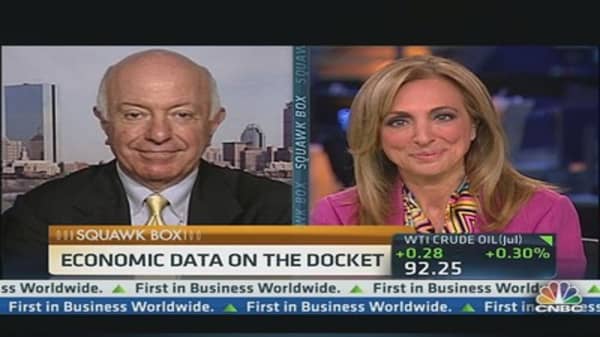William O'Donnell, head U.S. Treasury strategist at RBS, said he expects U.S. rates to remain elevated going into the nonfarm payrolls report Friday, but that the U.S. markets are also keeping an eye on Japan. "Stocks are watching bonds and bonds are watching stocks and stocks are also watching JGBs (Japanese Government Bonds)," he said.
The yen rose in U.S. trading, with dollar/yen falling below 100. "Look at today's biggest losers. The favorite of all the yen-based accounts was long the Nikkei, short yen and long dollar. Now you have the dollar index down hard, and you have the Nikkei down hard. I think the genesis of (higher rates and market volatility) wasn't just the Fed's tapering talk which we thinks is understandable given where we are in the calendar, but more importantly this spark of volatility that was generated in Japan and dispersed into all the global markets where investors got caught," he said. He noted the 10-year Japanese bond, which was yielding 0.83 percent in early Asia trade, had traveled as high as 1 percent, more than doubling in a short period.
O'Donnell said it does not seem U.S. rates will go much higher in the near term. "There seems to be upward between 2.2 and 2.25 percent a barrier of demand that I think is going to make it very difficult for rates to go much higher. We're looking for a range of 2.06 to 2.23 going all the way into Friday," he said. And after that, it depends on the jobs report and what traders believe the Fed will do. Before the last jobs report, the 10-year was yielding just above 1.6 percent.
"I'd be surprised over the next three months for 10s to go above 2.4. In my view, if we go above 2.4 that will be the concrete sign that the secular bull trend is over," he said. The 10-year was last at that level in August, 2011.
MacNeil Curry, global head of technical strategy at Bank of America Merrill Lynch, said he expects U.S. rates to move higher, and it is likely stocks will decline a bit more. He said he does not anticipate a big impact on stocks from higher rates unless there is a rapid move.
(Read More: The 'Hindenburg Omen': Bear Signal Scares Market)
"I would argue what's more important is the rate of change rather than the level of yields...a disorderly move is negative, while a slow orderly grind higher is not," Curry said. "There are pockets from which convexity hedging (for mortgages) will become an issue. 2.20 2.30 and north of 2.40. At those points, you could see this thing become disorderly."
Curry said he believes the Treasury market is consolidating near term. But the fact that yields finished May higher than in April, and they traded in a range that encapsulated the prior month move, it could be important for a rising trend in yields. "May encapsulated the previous month. That's unusual and it usually predicts higher yields going forward. If you look at 10-year yields, after a bearish outside month, a probability of higher rates the next month is 78 percent," he said.
If the S&P sees more selling, Curry said it would find support at 1620. Below that, a key level is 1600.
Keon said he does not expect higher rates to hurt stocks. "There's always nervousness in the market when you make a shift to a different environment," he said. In the next year, the environment should still be good for stocks, despite the drag from Washington's spending cuts. "That's going to go away. I think the underlying strength of the economy is going to shine through and you're going to get more like four or five percent GDP, but you're also going to have higher rates and a less easy Fed."


.530x298.jpg?v=1596817600)


